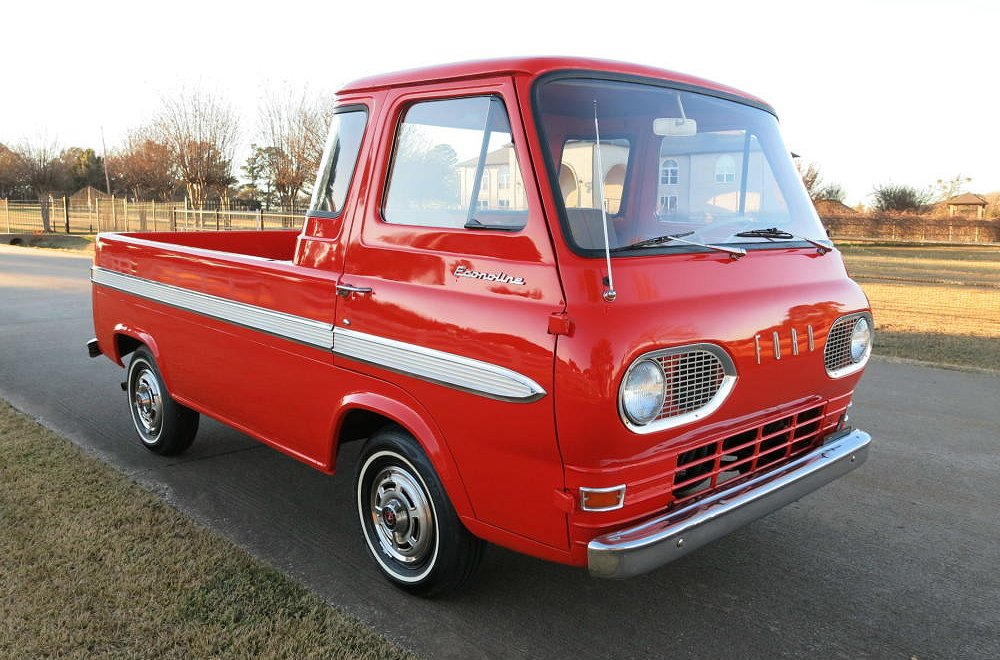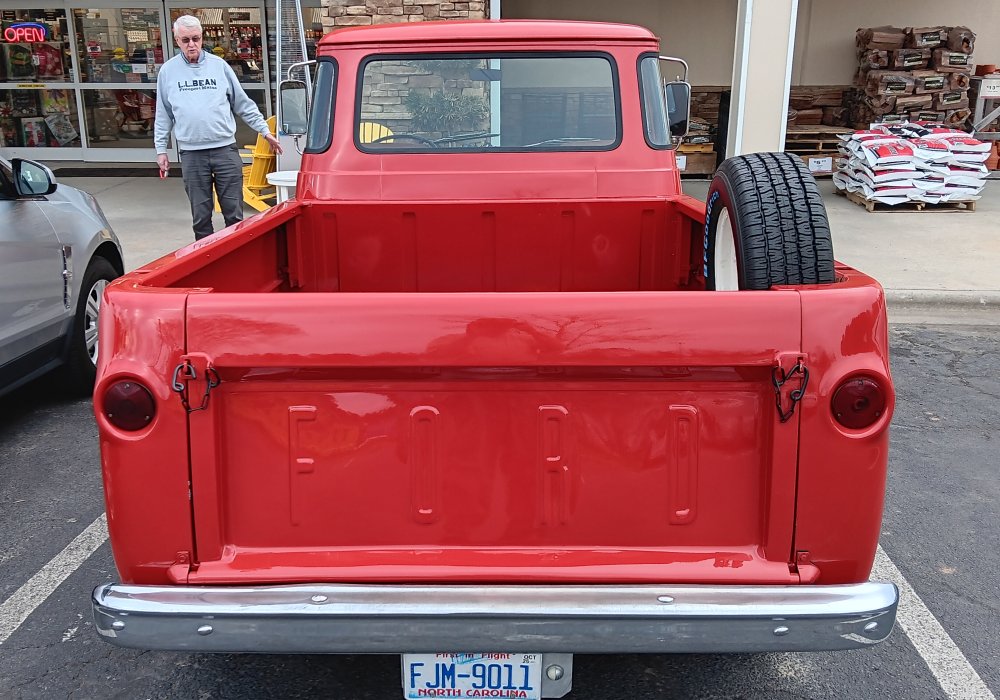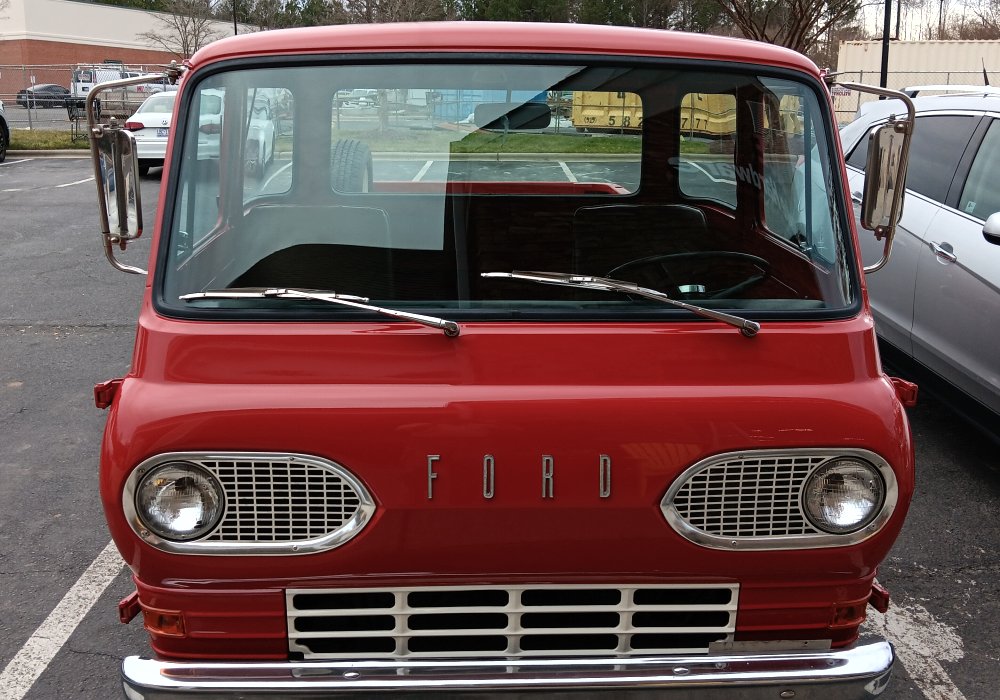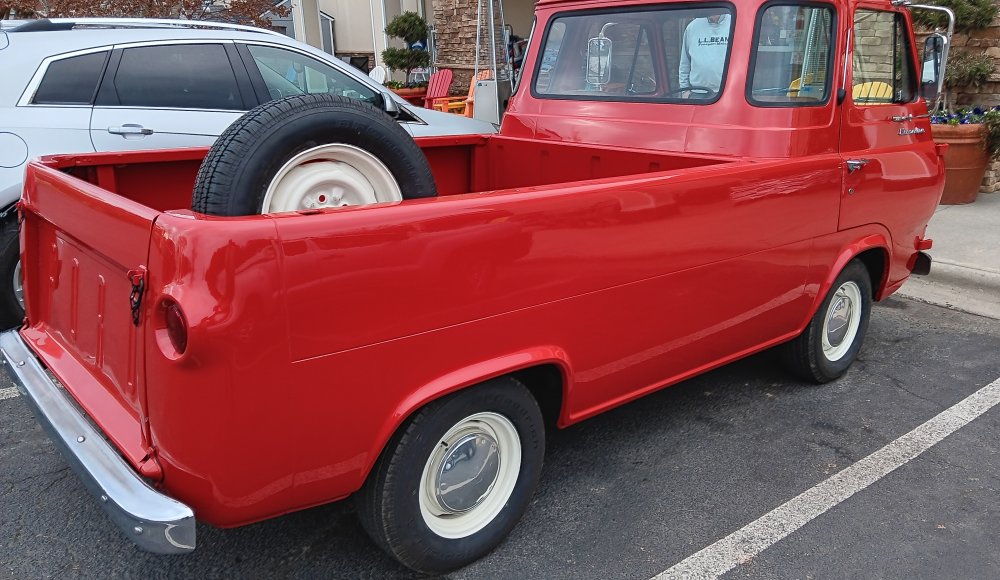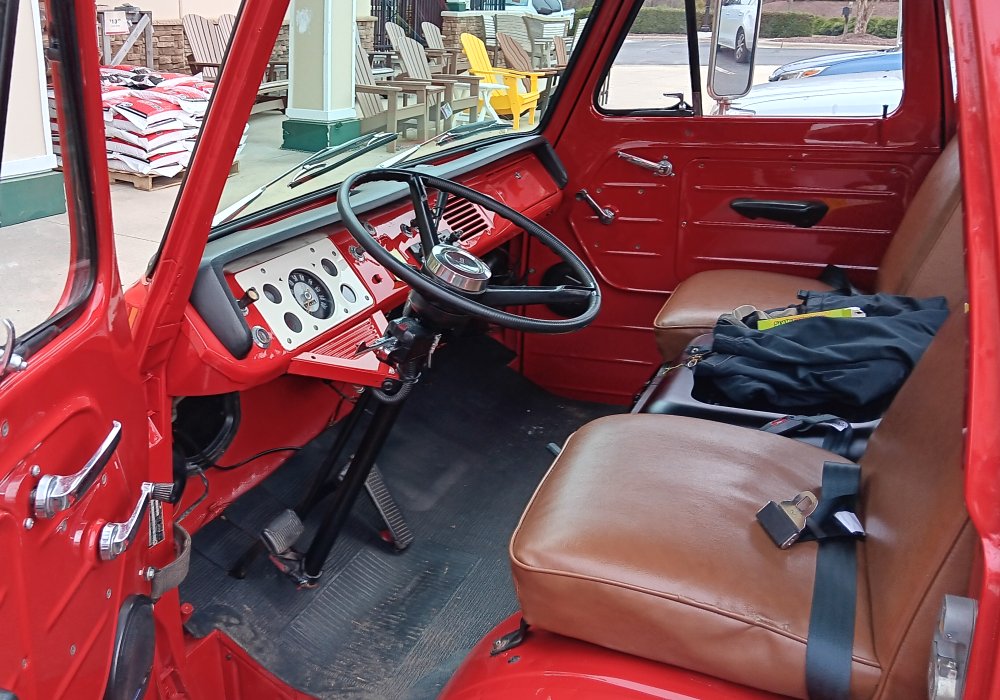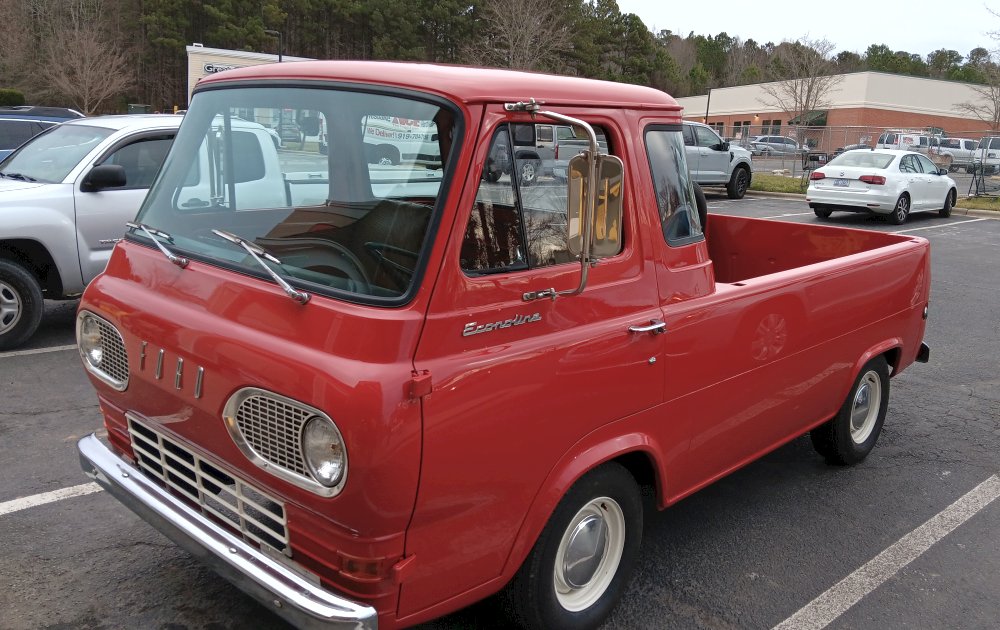Description
The Ford Econoline Pickup was one of the most unusual and innovative vehicles Ford introduced in the early 1960s. Produced from 1961 to 1967, it was part of the first generation of the Econoline line, which also included vans and station buses. The pickup version was Ford’s attempt to blend the utility of a light truck with the compact, forward-control design that was becoming popular in both commercial and personal markets.
From the outside, the Econoline Pickup was instantly recognizable for its cab-over design. Instead of a long hood, the driver sat almost directly above the front axle, with the engine located between the seats inside the cab. This gave the pickup a very short nose and maximized cargo bed length within a compact overall footprint. The bed itself was longer than that of a conventional short-wheelbase pickup, and the design allowed for a flat load floor with no intrusion from rear wheel wells. Styling was simple and clean, with straight body lines, a wide grille, and large round headlights that emphasized functionality.
Inside, the Econoline Pickup was spartan but practical. A simple metal dash, large speedometer, and basic controls dominated the cabin. Seating was usually a two-passenger bench, with the engine “doghouse” positioned between the driver and passenger. While this setup limited legroom and created more cabin noise and heat compared to conventional pickups, it kept the truck compact while still offering useful space. Higher trim levels and aftermarket options allowed for vinyl upholstery, heaters, and radios, but comfort was not the main priority.
Under the doghouse sat Ford’s small inline-six engines. The base engine was a 144 cubic inch six, with larger options including the 170 and later the 240 cubic inch versions as the vehicle developed. These engines provided modest power, but they were reliable and economical, well suited for urban deliveries, light hauling, and tradesmen who valued efficiency over speed. Transmissions were typically three-speed manuals, though automatics became available later in the production run.
On the road, the Econoline Pickup had its quirks. The forward-control layout meant that drivers were positioned almost directly above the front wheels, giving excellent visibility but also making the ride feel rougher compared to conventional trucks. With most of its weight over the front axle, it could feel nose-heavy when unloaded, though the design balanced out when carrying cargo. Despite its unusual driving dynamics, its compact size made it easy to maneuver in tight city streets, which was one of its biggest advantages.
The Ford Econoline Pickup was marketed as both a commercial tool and a personal-use vehicle. Businesses appreciated its long bed and efficient size for deliveries, while some private owners liked its distinctive styling and utility. It competed directly with the Chevrolet Corvair Rampside and Volkswagen Transporter pickups, both of which also used cab-forward designs, but the Ford offered a more traditional American approach with six-cylinder power and a simple ladder-frame construction.
By 1967, Ford discontinued the Econoline Pickup, as buyers shifted back toward more conventional compact pickups like the Ford Falcon-based Ranchero or the later Courier. Its forward-control design, while practical, was less comfortable and less refined than buyers increasingly demanded in light trucks.
Today, the Ford Econoline Pickup is a rare and collectible classic. Its unusual design, short production run, and distinctive 1960s styling make it a favorite among vintage truck enthusiasts. Restored examples stand out at shows for their quirky charm and historical significance, representing an era when American automakers experimented boldly with design to meet the growing needs of urban and light-duty users.
